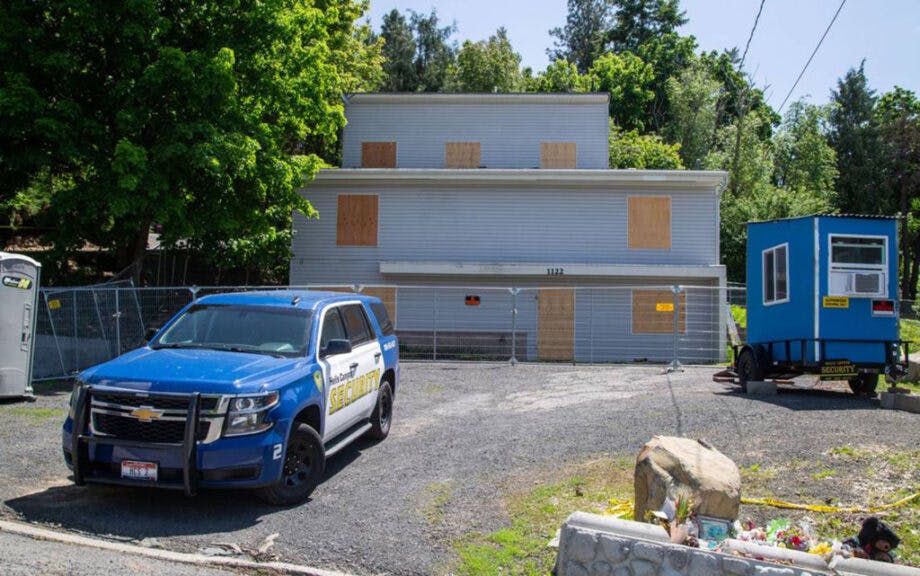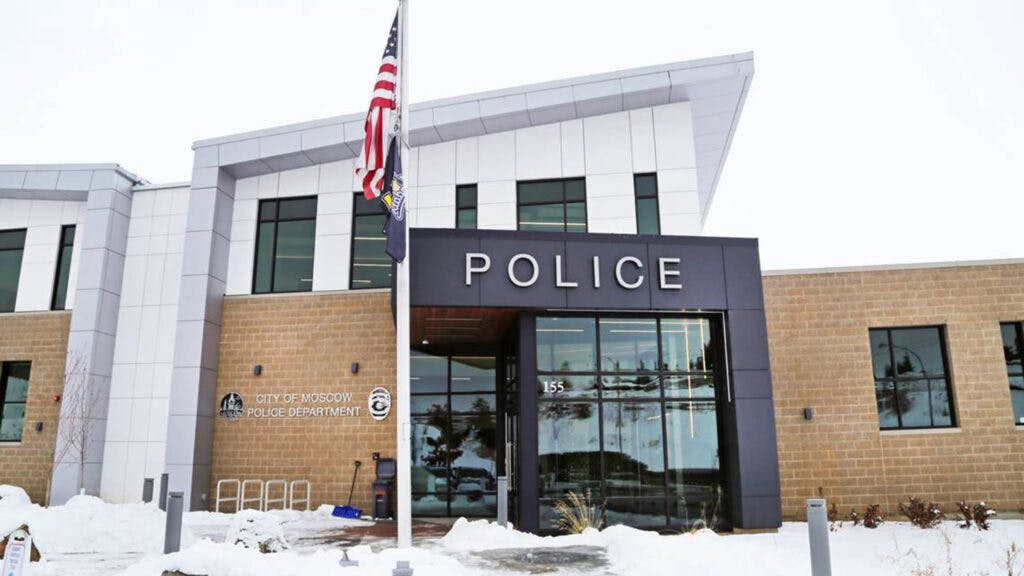On November 13, 2022, police in Moscow, Idaho, were called to an off-campus residence after receiving a report about an unconscious individual. When they arrived, they found a gruesome scene: Four murdered co-eds, with so much blood it could be seen dripping down the foundation outside.
Inside the home, Ethan Chapin, 20; Kaylee Goncalves, 21; Xana Kernodle, 20; and Madison Mogen, 21, had been stabbed to death, each with multiple wounds. Kernodle, Goncalves, and Mogen were roommates, while Chapin was dating Kernodle.
Kaylee and Madison had been friends since childhood, and had been out at a popular bar earlier in the evening. Goncalves was set to graduate early in December and had already moved out of the house, so she was just in town for the weekend to see Mogen, and the two slept in Mogen’s room on the top floor of the three-floor home.
That same night, Kernodle and Chapin were at a fraternity party before they, too, returned to the residence, sleeping in Kernodle’s room on the main floor.

Angela Palermo/Idaho Statesman/Tribune News Service via Getty Images
At around 4:00 a.m., someone entered the home and murdered Kernodle and Chapin before going upstairs to murder Goncalves and Mogen. Two other roommates – one on the main floor and one on the basement level – were left unharmed. One of the survivors, Dylan Mortensen, told police that she was awoken at around 4:00 a.m. by what she thought was Goncalves playing with her dog upstairs. Not long after, Mortensen heard someone say, “there’s someone here.” Mortensen opened her door but didn’t see anything, so she went back in her room. She opened her door a second time and heard a male voice say, “it’s ok, I’m going to help you,” or something similar.
A security camera located on a property less than 50 feet from Kernodle’s bedroom picked up sounds of voices or a whimper followed by a thud at around 4:17 a.m. on November 13. A dog could also be heard.
Mortensen told police she opened her door a third time and saw a man wearing black clothing and a mask over his nose and mouth walking toward her. She said the man was 5’10” or taller, athletically built but not muscular, with bushy eyebrows. She said the man walked past her as she stood in a “frozen shock phase.” She said he walked out of the house, and she locked herself in her room.
Police began a massive investigation, providing regular updates that contained no details about any leads they were pursuing.
Police were able to narrow the timeframe of the crime to between 4:00 a.m. and 4:25 a.m. and reviewed video footage taken in the area in the time before and after the murders are believed to have occurred. The footage showed a white Hyundai Elantra without a front license plate (front license plates are required in Washington and Idaho, but not in Pennsylvania, where the car was registered) in the area between 3:29 a.m. and 4:20 a.m. The vehicle can be seen passing the off-campus residence three times before coming back a fourth time around 4:04 a.m. and attempting to turn around on the road. The vehicle was next seen around 4:20 a.m. traveling away from the direction of the off-campus residence at high speed heading in the direction of a road that eventually leads to Pullman, Washington, where the suspect attended Washington State University (WSU).
Video footage from the WSU campus showed a white Hyundai Elantra leaving the area and heading toward Moscow at around 2:53 a.m. This vehicle was again observed on five cameras in Pullman and the WSU campus at around 5:25 a.m.
Police pulled records for white Hyundai Elantras registered at WSU on November 29 – just over two weeks after the murders were committed – and found one belonging to the 28-year-old man who was eventually arrested for the crime, whom The Daily Wire is not naming. Police reviewed the owner’s Washington state driver’s license and determined he matched the physical description of the suspect provided by one of the surviving roommates.
Police matched the suspect to the vehicle through two previous traffic stops in the months before the murders. They also learned that the suspect registered his vehicle in Washington and received Washington plates on November 18 – five days after the murders.

Angela Palermo/Idaho Statesman/Tribune News Service via Getty Images
A license plate scanner observed the suspect’s sedan on December 13 in Loma, Colorado. On December 15, the vehicle was stopped by law enforcement in Indiana. By December 16, the vehicle was in Albrightsville, Pennsylvania, the suspect’s hometown, where he was eventually apprehended. DNA obtained by a cheek swab matched DNA found on the knife sheath left at the scene of the crime.
Police also reviewed cell phone data to show the suspect’s phone did not ping any cellular towers near the crime scene during the relevant timeframe, but an expanded examination of cell phone data showed the phone stopped reporting data to the network at around 2:47 a.m. At that time, the white Elantra was leaving Pullman and heading toward Moscow. The phone next pinged at 4:48 a.m. in an area south of Moscow, heading back to Pullman. Cell records also showed that the suspect left his home in Pullman around 9:00 a.m. on November 13 and traveled back to Moscow.
Cell records dating back to June 2022 showed the suspect’s phone was in the crime scene area on at least 12 occasions before the murders – all but one in the late evening or early morning hours.
The suspect was arrested on December 30, 2022, and returned to Idaho to face trial. His trial was originally set for October 2023, but has been pushed back following pre-trial hearings and motions. The suspect’s attorneys filed a motion earlier this year requesting that the indictment against the accused be dismissed, claiming that the grand jury was biased, given inadmissible evidence, and didn’t use the correct legal standard when indicting, the Associated Press reported. The hearing for these claims was held behind closed doors in late October, except for the allegations of an improper legal standard due to Idaho law about keeping grand jury details secret.
Idaho 2nd District Judge John Judge rejected the argument that the grand jury should have used the “reasonable doubt” standard – as is required in the actual criminal trial – instead of the “probable cause” standard that is legally permissible in a grand jury, which does not hear the full evidence as a trial jury would.
In early August, his attorneys offered an alibi for the suspect’s whereabouts on the night of the murder, saying he was out driving late at night.
[The suspect] has long had a habit of going for drives alone. Often he would go for drives at night. He did so late on November 12 and into November 13, 2022,” Anne Taylor, the suspect’s attorney, wrote in the filing. “[The suspect] is not claiming to be at a specific location at a specific time; at this time there is not a specific witness to say precisely where [my client] was at each moment of the hours between late night November 12, 2022, and early morning November 13, 2022. He was out, driving during the late night and early morning hours of November 12-13, 2022.
In a previous filing, the suspect’s attorneys claimed that DNA found at the crime scene may have been planted by police.
“The State’s argument asks this Court and [the suspect] to assume – is that the DNA on the sheath was placed there by [the suspect], and not someone else during an investigation that spans hundreds of members of law enforcement and apparently at least one lab the State refuses to name,” the suspect’s defense attorneys wrote.
The trial is now likely to start sometime next year.

Continue reading this exclusive article and join the conversation, plus watch free videos on DW+
Already a member?

.png)
.png)

